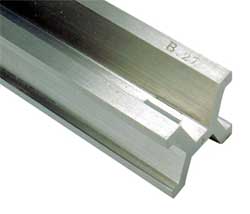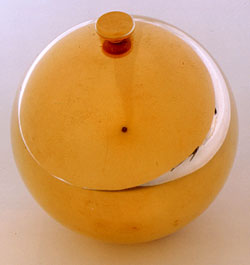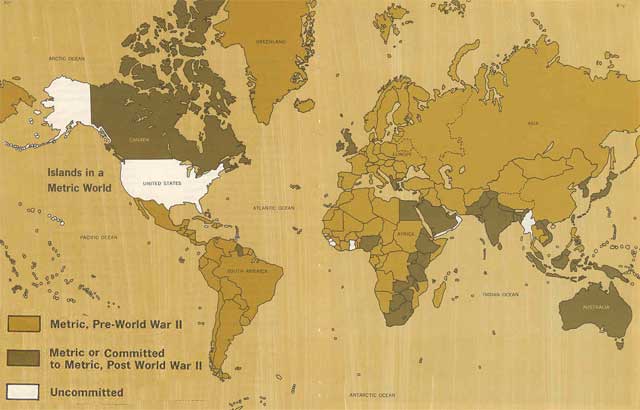The French originated the metric system of measurement (now called the International System of Units and abbreviated SI, pronounced ess-eye).
Early development
Most historians agree that Gabriel Mouton, the vicar of St. Paul’s Church in Lyons, France, is the “founding father” of the metric system. He proposed a decimal system of measurement in 1670. Mouton based it on the length of one minute of arc of a great circle of the Earth (now called a nautical mile, 1852 meters). He also proposed the swing-length of a pendulum with a frequency of one beat per second as the unit of length (about 25 cm). A pendulum beating with this length would have been fairly easy to produce, thus facilitating the widespread distribution of uniform standards. Over the years, his work was revised, improved, and extended by a number of French scientists.
The political sponsor of weights and measures reform in the French Revolutionary National Assembly was the Bishop of Autun, better known as Talleyrand. Under his auspices, the French Academy appointed several committees to carry out the work of developing a usable system of weights and measures for France. One of the committees recommended a decimalized measurement system based upon a length equal to one ten-millionth of the length of a quadrant of the earth’s meridian (i.e., one ten-millionth of the distance between the equator and the North Pole).

In 1790, in the midst of the French Revolution, the National Assembly of France requested the French Academy of Sciences to “deduce an invariable standard for all the measures and all the weights.” The Commission appointed by the Academy created a system that was, at once, simple and scientific. The unit of length was to be a portion of the Earth’s circumference. Measures for capacity (volume) and mass were to be derived from the unit of length, thus relating the basic units of the system to each other and to nature. Furthermore, larger and smaller multiples of each unit were to be created by multiplying or dividing the basic units by 10 and its powers. This feature provided a great convenience to users of the system, by eliminating the need for such calculations as dividing by 16 (to convert ounces to pounds) or by 12 (to convert inches to feet).
Similar calculations in the metric system could be performed simply by shifting the decimal point. Thus, the metric system is a decimal (base 10) system.
The Commission assigned the name “metre” (in the U.S. spelled “meter”) to the unit of length. This name was derived from the Greek word, metron, meaning “a measure.” The physical standard representing the meter was to be constructed so that it would equal one ten-millionth of the distance from the North Pole to the equator along the meridian running near Dunkirk in France and Barcelona in Spain.
A surveying team under the direction of two men, Pierre-Francois-Andre Mechain and Jean- Baptiste-Joseph Delambre, spent 6 years in measuring the “arc” that the earth made in a line between Dunkirk in France on the English Channel and Barcelona in Spain. The surveyors underwent much harassment and even were jailed, at times, while making their measurements, because some of the citizens and area officials resented their presence and felt they were up to no good. It was later found that Delambre and Mechain had not properly accounted for the earth’s flattening in correcting for oblateness. However, the meter remains the invariable standard for the metric system, and its length has not changed even though the official expression of the definition the meter has changed several times to improve the accuracy of its measurement.
Meanwhile, scientists were given the task of determining the other units, all of which had to be based upon the meter.
The initial metric unit of mass, the “gram,” was defined as the mass of one cubic centimeter — a cube that is 0.01 meter on each side — of water at its temperature of maximum density. For capacity, the “litre” (spelled “liter” in the U.S.) was defined as the volume of a cubic decimeter — a cube 0.1 meter on each side.

After the units were determined, the metric system underwent many periods of favor and disfavor in France. Napoleon once banned its use. However, the metric system was officially adopted by the French government on 7 April 1795. A scientific conference was held from 1798 to 1799 (with representatives from the Netherlands, Switzerland, Denmark, Spain, and Italy) to validate the metric system’s foundation and to design prototype standards. Permanent standards for the meter and the kilogram were made from platinum. These standards became official in France by an act of 10 December 1799.
Although the metric system was not accepted with enthusiasm at first, adoption by other nations occurred steadily after France made its use compulsory in 1840.
The standardized structure and decimal features of the metric system made it well suited for scientific and engineering work. Consequently, it is not surprising that the rapid spread of the system coincided with an age of rapid technological development. In the United States, by Act of Congress in 1866, it became “lawful throughout the United States of America to employ the weights and measures of the metric system in all contracts, dealings or court proceedings.” (Note that there has never been a law explicitly making it legal to use the inch-pound system nor defining those units’ values. In fact, it wasn’t until the Mendenhall Order, in 1893, that the units of the inch-pound system were finally officially defined — in terms of metric measurements.)
U.S. involvement
By the late 1860s, even better metric standards were needed to keep pace with scientific advances. In 1875, an international agreement, known as the Convention of the Metre, set up well defined metric standards for length and mass and established permanent mechanisms to recommend and adopt further refinements in the metric system. This agreement, commonly called the Treaty of the Meter in the United States, was signed by 17 countries, including the United States. As a result of the Treaty, metric standards were constructed and distributed to each nation that ratified the Convention. Since 1893, the internationally adopted metric standards have served as the fundamental measurement standards of the United States. Our non-metric units have been defined in terms of these metric standards ever since.
By 1900 a total of 35 nations, including the major nations of continental Europe and most of South America, had officially accepted the metric system.
In 1960, the General Conference on Weights and Measures, the diplomatic organization made up of the signatory nations to the Convention of the Metre, adopted an extensive revision and simplification of the system. Seven units — the meter (for length); the kilogram (for mass); the second (for time); the ampere (for electric current); the kelvin (for thermodynamic temperature); the mole (for amount of substance); and the candela (for luminous intensity) — were established as the base units for the system. The name Systeme International d’Unites (International System of Units), with the international abbreviation SI, was adopted for this modern metric system.
U.S. transition

In 1971, the U.S. Secretary of Commerce, in transmitting to Congress the results of a 3-year study authorized by the Metric Study Act of 1968, recommended that the U.S. change to predominant use of the metric system through a coordinated 10-year national program. The U.S. Congress responded by enacting the Metric Conversion Act of 1975, calling for voluntary conversion. (A 10-year deadline was included in the original bill, but the deadline was not included in the final version passed by Congress.)
Amendments to the Act in 1988 designated the metric system as the “preferred system of weights and measures for United States trade and commerce” and required that each federal agency, “by the end of the fiscal year 1992, use the metric system of measurement in its procurements, grants, and other business-related activities” to the extent feasible and practical.
Measurement science continues to develop more precise and easily reproducible ways of defining measurement units. The working organizations of the General Conference on Weights and Measures coordinate the exchange of information about the use and refinement of the metric system and make recommendations concerning improvements in the system and its related standards. Additions and improvements to SI are made by theGeneral Conference, which meets periodically to ratify the changes, to keep up with technology.
A strong movement toward the use of the metric system in the U.S. during the 1970-1980 period lost momentum. Currently the U.S. is using dual measurements, where there is mixed use of the metric and inch-pound systems. A number of large industries and some smaller ones have converted to SI use. But, mainly due to lack of a mandate from U.S. voters, Congress has not pushed for a law making the metric system the sole measurement system in the U.S. However, as metric is the sole measurement language of most of the world, foreign customers buying U.S. products are gradually requiring that they be delivered labeled and produced in metric units; therefore, eventually, the chances are that the U.S. will become a metric nation.
Back to USMA home.